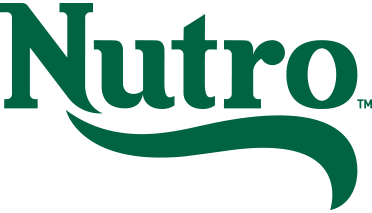Weight Management Tips For Adult Cats
How do you know if your cat is overweight? What are the health risks of obesity for pets? And if your cat is overweight, what can you do about it? We have answers and tips to help you learn about feline obesity.
Overfeeding: The Most Common Cause Of Obesity In Cats
Cats often gain weight through overeating, which is typically due to overfeeding. So while your cat might look up at you with sweet, adoring eyes, resist the urge to give her excess treats or reward her with table food — it can add up to extra pounds.
How To Tell If Your Cat Is Overweight
When you look at your adult cat, you should be able to see her waistline. She should have a slight tuck at the waist, and you should be able to feel her ribs and back bone when petting her. If you can’t, consult your veterinarian to see if your kitty might need to switch to a weight loss or weight management diet.
Weight Related Health Conditions In Cats
Overweight cats can develop serious health problems, such as:
- Joint problems
- Diabetes mellitus
- Breathing problems
- Increased risk of cancers
- Skin problems
- Shorter life spans
You can help reduce the risk of the above conditions simply by making sure your cat is at an optimal weight.
How To Help Manage Your Cat’s Weight With Food
Reduce The Amount You Feed Your Cat
First, cut down gradually on bad habits, such as filling your cat’s bowl to the top. Instead, follow the feeding guides on the package of a natural adult cat food. These guidelines are targeted to keep your cat’s body in ideal condition. Measure the recommended amount for the day, and feed in several small meals. Cats naturally eat frequent, small meals, but it’s good to ration food so they don’t eat all of their small meals at once.
Reduce The Amount You Feed Your Cat
First, cut down gradually on bad habits, such as filling your cat’s bowl to the top. Instead, follow the feeding guides on the package of a natural adult cat food. These guidelines are targeted to keep your cat’s body in ideal condition. Measure the recommended amount for the day, and feed in several small meals. Cats naturally eat frequent, small meals, but it’s good to ration food so they don’t eat all of their small meals at once.

Feed Wet Food
Research has shown that wet food can be beneficial for weight management in cats. Higher moisture content was shown to decrease food intake, increase activity and decrease weight gain when the same amount of calories was eaten. If you are doing mixed feeding, at least 25% of the calories (or about one-third of the volume) should come from wet food.
Choose The Right Adult Cat Food
Another way to help manage your cat’s weight with food is by choosing the best formula. You can help your cat get to a healthy weight by feeding a formula that matches your cat’s lifestyle. For example, NUTRO™ Indoor Formulas have a caloric content and feeding guidelines tailored to maintaining a healthy body weight with indoor cats. Work with your vet to determine a weight loss plan for your cat, and follow the feeding guides on your cat food package for weight reduction until the desired weight is met. When your cat has reached the ideal weight, feed the appropriate formula and amount for optimal weight management.
Establish A Playtime Routine
In addition to healthy feeding habits, you can help your cat shed a few pounds by encouraging regular exercise: Get your adult cat moving with toys or other activities. (You might burn some calories, too!) Turn mealtime into playtime! Use food puzzles to make your kitty work for her food. You also can simulate outdoor play by getting your cat to “hunt” toys that look like rodents or birds.




